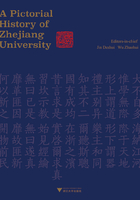
Chapter III Long March of Academics for Rise (1937-1946)

In September 1937, Hangzhou was endangered by the flames of war. To preserve the cultural heritage and cultivate professionals for the country, Zhejiang University decided to migrate and carry on its education in other areas.
Chu Kochen led the faculty and students and some of their family members to travel arduously with large numbers of books as well as instruments and equipments to Yuqian and Jiande of Zhejiang Province first, then to Ji'an and Taihe of Jiangxi Province and Yishan of Guangxi Province and eventually to Zunyi and Meitan of Guizhou Province in January 1940, where Zhejiang University settled down for about seven years. The march westwards covered over 2,600 kilometers via the 7 Provinces of Zhejiang, Jiangxi, Hunan, Guangxi, Guangdong and Guizhou and Fujian.
In the first half of the 20thcentury, two migrations of profound historic significance took place in China. The world-famous Long March of the Chinese Workers' and Peasants'Red Army traversing 25,000 li shifted the supreme headquarters of Chinese revolution to Northwest China and made possible the Chinese People's War of Resistance Against Japanese Aggression and Chinese revolution. The strenuous trudge of Chinese intellectuals and national elites to evacuate the occupied areas and carry on education under great hardship before and after the outbreak of the Chinese People's War of Resistance Against Japanese Aggression contributed immeasurably to the preservation, continuity and development of the national strength of technology and culture. Among all these universities, Zhejiang University marked a very representative one in migration, whose stories have been praised as a “long march of academics” by Peng Zhen, the then Chairman of the Standing Committee of the NPC.
In the autumn of 1937, Hangzhou was endangered by the flames of war. To preserve the cultural heritage and cultivate professionals for the country, Zhejiang University decided to migrate and carry on its education in other areas. In September, Chu Kochen led the faculty and students and some of their family members to travel arduously with large numbers of books as well as instruments and equipment to Yuqian and Jiande of Zhejiang Province first, then to Ji'an and Taihe of Jiangxi Province and Yishan of Guangxi Province and eventually to Zunyi and Meitan of Guizhou Province in January 1940, where Zhejiang University settled down for about seven years. The march westwards covered more than 2,600 kilometers via the 7 provinces of Zhejiang, Jiangxi, Hunan, Guangxi, Guangdong, Guizhou and Fujian. Meanwhile, Longquan Branch was founded in East Zhejiang.
President Chu Kochen encouraged a good academic atmosphere and set an example by personally taking part. ZJU thus officially established “Seeking Truth” as its motto and invited Ma Yifu, a master of Chinese culture, to write the lyrics of the school anthem, which, with profound influence, elaborates the quintessence of seeking truth and enriches the culture of Zhejiang University, taking inheriting and enhancing the scientific quintessence of “veritas”, innovative quintessence of “searching every truth to lead and benefit the people”, cooperative quintessence of “to your kindred or clan ye fain would relate”, open quintessence of “the Sea will a myriad rivers embrace” and patriotic quintessence of “O this sweet homeland we shall construct and consolidate” as its core contents. Zhejiang University adopted the mode of “professors' academic management and democratic administration” to bring into full play professors' significant role in talent cultivation, scientific research and management of university affairs and created the institutional guarantee for its development.
During that period, Zhejiang University witnessed steady expansion in size. Before the migration, it only had 16 departments in College of Liberal Arts and Sciences, Engineering College and Agricultural College. After returning to Hangzhou in autumn 1946, there were 26 departments in College of Liberal Arts, of Sciences, of Engineering, of Agriculture, of Law, of Medicine and of Normal College, 1 research academy, 4 research institutes, 1 research office, 5 faculties and 1 affiliated school (Longquan affiliated school with 8 departments), 2 preparatory courses and 1 affiliated middle school. The number of students rose from over 600 to 2,000-odd while that of associate professors and full professors virtually tripled from 70 in 1936 to 201.
Zhejiang University, undergoing great hardships during the migration, did not relax its operation under arduous conditions but called together noted professors and nurtured elites. According to statistics, 27 teachers who had lectured or worked in Zhejiang University during 1937 to 1946 became academicians of Chinese Academy of Sciences and Chinese Academy of Engineering later while 27 students who had studied in or graduated from Zhejiang University became the academicians as well. Great achievements in scientific research obtained in that period contributed to its rising reputation among international academic circles.
In October 1944, Dr. Joseph Needham, a British biologist and historian of technology in Cambridge, marveled at the rich academic atmosphere and excellent scientific and research performance of the students and teachers under such tough situations after his visits, praising it as one of the best four universities in China and“Oriental Cambridge”.

Sketch Map of Route of Zhejiang University's Migration Westwards.